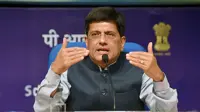Call centres set the registers ringing
By Uday Chatterjee | 10 Oct 2002
 Mumbai: India has become the hottest destination for setting up call centres, with the media reporting new call centres being set up almost every other day. Well-known companies like Wipro and HCL have also joined the bandwagon.
Mumbai: India has become the hottest destination for setting up call centres, with the media reporting new call centres being set up almost every other day. Well-known companies like Wipro and HCL have also joined the bandwagon.
What makes India so hot a destination? The answer is economics. Call centre staff in the US are likely to earn eight times more than their Indian counterparts. Call centres in India make everyone happy — the US customer’s call is serviced in real-time, the US company saves money, and the employee in India is paid handsomely.
The business of call centres is expected to grow at an annual compounded growth rate of 18 per cent. The bulk of the expected $142-billion global market for IT-enabled services by 2008 is likely to be accounted for by customer interaction services, which form a major component of the call centre business.
 Call centres were initially in-house centres. The business, however, got a boost when multinational companies (MNCs) began to outsource labour-intensive activities like payroll accounting, inventory management, customer care and credit appraisals from India. General Electric in Gurgaon and a British Airways subsidiary in Mumbai are among the best-known call centres in the country.
Call centres were initially in-house centres. The business, however, got a boost when multinational companies (MNCs) began to outsource labour-intensive activities like payroll accounting, inventory management, customer care and credit appraisals from India. General Electric in Gurgaon and a British Airways subsidiary in Mumbai are among the best-known call centres in the country.
Making hay while the sun shines
A report jointly published by the National Association of Software and Service Companies (Nasscom) and McKinsey says that the number of professionals employed in customer interaction services in India went up from 10,000 in 2000 to 30,000 in 2001. Of this, almost 15,000 are employed at call centres. The report predicts that by 2008, the call centre industry will mop up a whopping Rs 20,000 crore.
A call centre is a back-office for a company based outside India. A person from the UK or the US calls his local toll-free number and gets his doubts about a particular product or concept cleared without realising that the person answering his call is a professional sitting on the other side of the globe.
 The advantage that Indians enjoy over non-English speaking countries such as China, Japan and Russia is their grip on the English language. This has transformed India into an investment destination for the developed world in the field of information technology-enabled services (ITES), like medical transcription.
The advantage that Indians enjoy over non-English speaking countries such as China, Japan and Russia is their grip on the English language. This has transformed India into an investment destination for the developed world in the field of information technology-enabled services (ITES), like medical transcription.
MNCs are keen on investing in India because of the low cost of labour. Moreover, with the increasing rate of unemployment, call centres are an excellent opportunity for graduates and others looking for a career break. Although not many courses are available in this field, institutes that offer certificate courses have sprouted.
 The pay ranges from Rs 6,000 to Rs 11,000 a month, depending on experience, qualification and the nature of projects handled. A computer-science engineering graduate is more likely to get an IT-related project and it is easier to train them in their field of specialisation.
The pay ranges from Rs 6,000 to Rs 11,000 a month, depending on experience, qualification and the nature of projects handled. A computer-science engineering graduate is more likely to get an IT-related project and it is easier to train them in their field of specialisation.
An essential quality that the employers look for is a neutral accent that can be easily ‘Americanised.’ Once recruited, the customer service operators (CSOs) undergo extensive training for five to six weeks. The CSOs are trained to improve their accent; given cross-culture education and product training, and also have mock call sessions. Since the working hours are mostly at night, they are given lessons in stress management.
Split personalities
Radhika M, who is Diana S when working in the call centre, says: “I found it difficult to speak with an American accent initially. But later, I managed to pick it up. But my friends, who were not aware of the call centre ethics, thought I was putting on a pseudo accent.”
 The industry, which started by handling simple phone calls for information and reservation, has grown by leaps and bounds and now handles high-end projects in fields such as design, human resources, accounting and healthcare.
The industry, which started by handling simple phone calls for information and reservation, has grown by leaps and bounds and now handles high-end projects in fields such as design, human resources, accounting and healthcare.
How stable is the industry? Unlike medical transcription, call centres do not depend on a particular sector. A phenomenal increase is expected as far as ITES is concerned. The Nasscom report suggests that ITES will not be phased out for the next eight years.
Nevertheless, like all sunrise industries, there is a danger of the herd mentality taking over, and too many players entering the scene. Company valuations, though not irrationally exuberant as in the dotcom days, are still supposed to be on the higher side, and there is a danger of many an entrant falling by the wayside.






















